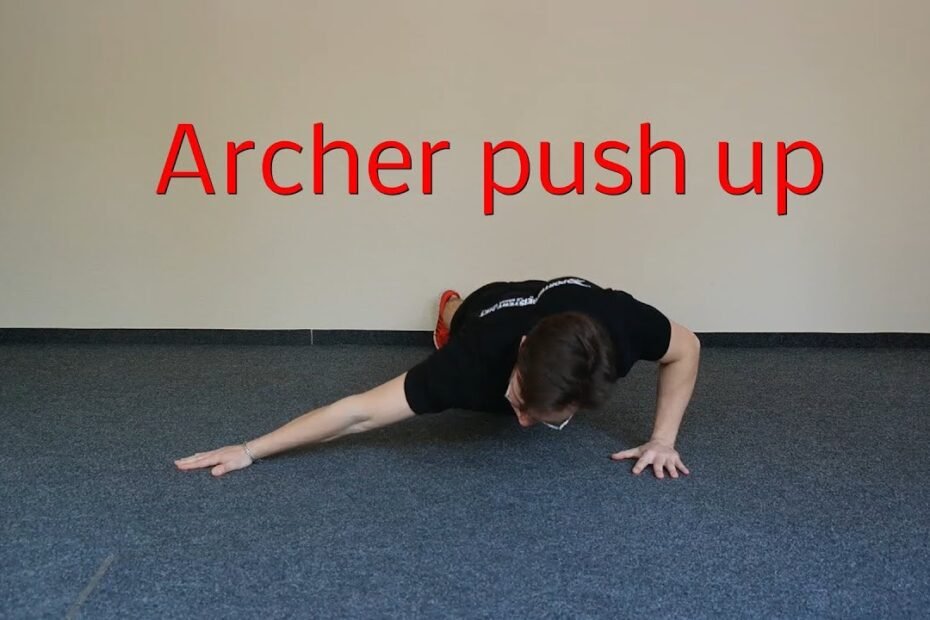Archer push-ups are an advanced variation of the traditional push-up that focuses on building unilateral strength and stability in the chest, shoulders, and arms. In this comprehensive guide, we’ll delve into how to perform archer push-ups correctly, the muscles worked, the benefits they offer, common mistakes to avoid, and variations & alternatives to level up your upper body training.
Muscles Worked
Primary Muscles Targeted:
- Pectoralis Major (Chest muscles)
- Anterior Deltoids (Front shoulder muscles)
- Triceps Brachii (Back of the upper arm)
Secondary Muscles Engaged:
- Serratus Anterior (Muscles around the ribs)
- Rectus Abdominis (Abdominal muscles)
- Obliques (Side abdominal muscles)
How to Perform Archer Push-Ups
Follow these steps to perform archer push-ups correctly:
- Starting Position: Begin in a high plank position with your hands positioned wider than shoulder-width apart. One hand should be directly under your shoulder, while the other hand is extended out to the side.
- Core Engagement: Engage your core muscles to maintain a straight line from head to heels throughout the exercise.
- Lowering Phase: Inhale as you lower your chest towards the hand that is positioned closer to your body. Keep your elbows tucked in as you descend.
- Pushing Phase: Exhale as you push through the palm of the working hand to extend your arm and return to the starting position. Focus on contracting your chest and triceps as you press upwards.
- Repetition: Perform the movement for a specific number of repetitions or a set duration, then switch to the other side.
Benefits of Archer Push-Ups
Archer push-ups offer several benefits for your upper body strength and stability:
- Unilateral Strength: By working one side of the body at a time, archer push-ups help address muscle imbalances and develop unilateral strength and stability.
- Chest and Shoulder Development: The asymmetrical nature of the exercise targets the chest and shoulder muscles in a unique way, promoting balanced muscle growth.
- Core Activation: Maintaining a plank position engages the core muscles, promoting core strength and stability throughout the movement.
- Scapular Control: Archer push-ups require scapular protraction and retraction, enhancing scapular control and shoulder stability.
Common Mistakes to Avoid
To maximize the effectiveness of archer push-ups and reduce the risk of injury, be mindful of these common mistakes:
- Overarching the Lower Back: Maintain a neutral spine by engaging your core muscles and avoiding excessive arching of the lower back.
- Shrugging the Shoulders: Keep your shoulders away from your ears and maintain shoulder blade stability throughout the movement.
- Incomplete Range of Motion: Lower your chest towards the working hand until it is close to the ground to ensure full activation of the chest and triceps muscles.
- Neglecting Proper Form: Focus on maintaining proper form and technique, even if it means performing fewer repetitions.
Variations & Alternatives
Variations:
- Assisted Archer Push-Ups: Use a resistance band anchored to a fixed point to provide assistance during the movement, making it easier to perform.
Alternative Exercises:
- Single-Arm Push-Ups: Perform push-ups with one hand placed on the ground and the other hand behind your back, focusing on one side at a time.
- Plyometric Push-Ups: Incorporate explosive movements into your push-ups to increase power and explosiveness in the upper body.
Incorporate archer push-ups or their variations into your upper body training routine to enhance unilateral strength, improve stability, and take your upper body strength to new heights.
